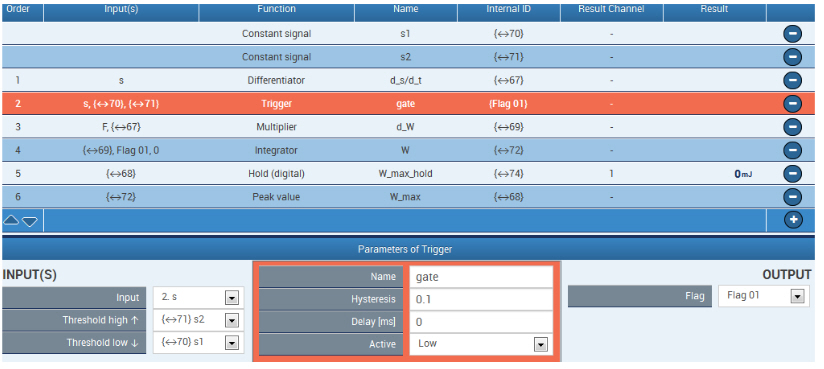Introduction
Mechanical work performed W will be measured by integrating force F over displacements.
(Because the processing is time-discrete, this is actually a summation, however the term integration will still be used here.)
The beginning and end of the integration are determined by measurable events such as fixed displacement or force values or signal edges on a digital input.









